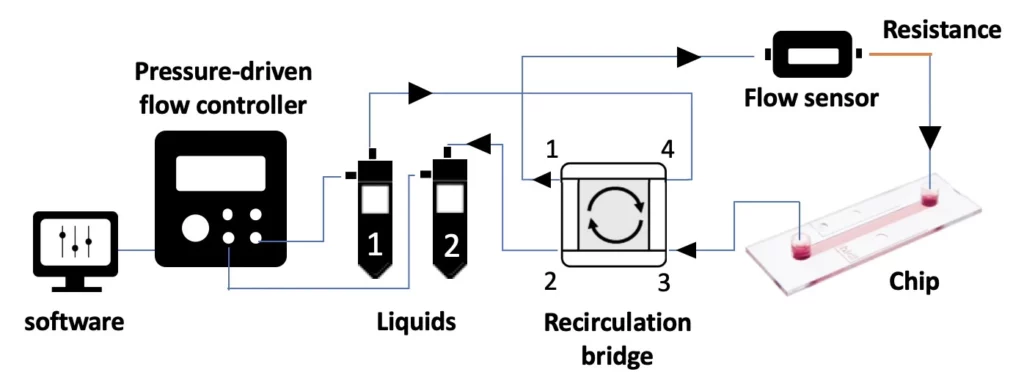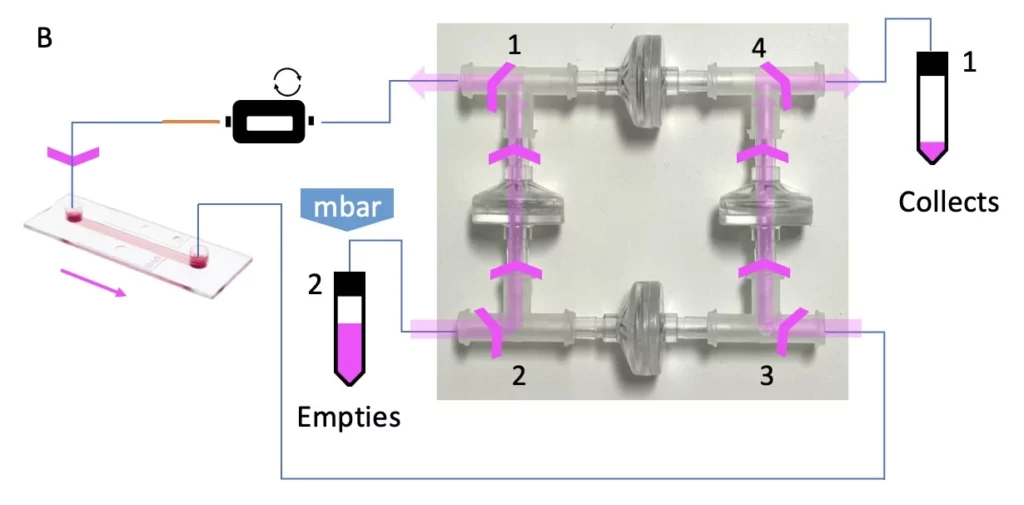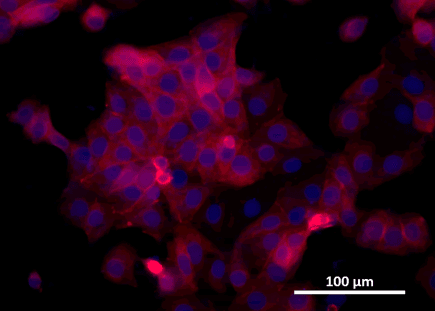Check Valve System Pack for Recirculation
Flow control for long-term unidirectional microfluidic experiments
Up to 3 weeks long term perfusion
Unidirectionnal flow rate from 7 nL/min to 5 mL/min
Setup compatible with incubation
The fluid stays in the incubator removing risks of bubble
Passive valves, no backflow
Low clogging risk
Easily stackable for parallelization
No need for usb or electrical connection

Need a microfluidic SME partner for your Horizon Europe project?
Check valve recirculation pack
The recirculation bridge is suitable for recirculation using a pressure-driven flow controller.
You may also perform recirculation with existing instruments, such as a rotary valve or using active valves.
Here is a comparison with the usually used active valves:

The recirculation bridge comprises four passive check valves connected to allow the flow to always be in the same direction inside the connected microfluidic chip when pressurizing the first or second reservoir.
Therefore, the recirculation principle using this check valve bridge is to pressurize the first reservoir until it is nearly empty, then stop and start pressurizing the second reservoir. This allows the microfluidic chip to always be under unidirectional flow.
Check valve recirculation pack setup
Our all-in-one pack guarantees perfect compatibility between different instruments so you can start your experiment right away. The system is piloted by a single software that may also be used for other applications. We also provide continuous and full customer support for you to get the best results out of your experiments.

Setup
Flow sensor (Galileo, MIC)
Software (Galileo user interface)
Pressure-driven flow controller
Two eppendorf or Falcon reservoirs
Recirculation bridge (Check valves)
Tubing and luers
Any microfluidic chip
User guides
Check the video below and this application note, explaining how to assemble the recirculation bridge and set up your recirculation system.
The fluid take a different path depending on the reservoir being pressurized but the flow in the chip is always in the same direction:
From reservoir 1 to reservoir 2:

Microfluidic recirculation applications
Recirculation in microfluidics is mainly used for long-term cell cultures. Tension, compression, and shear stress are physiologically important regulators of in vivo cell responses. It is especially important for mimicking blood vessels and intestinal physiological conditions.
Fluid flow over cells cultured in microfluidic perfusion chambers provides mechanical stimuli that are not reproduced when performing cell culture in Petri dishes. Recirculation can also be critical when using very expensive fluids.
Some applications of check valve recirculation in cell culture include:
- Tissue-on-chip models requiring the analysis of molecules produced in low concentration
- Cell culture experiments supplemented with expensive media compounds
- Experiments requiring high amounts of media, including long term cell culture, and the effect of medium to high shear stress
- And many more!

With an expertise in microfluidic flow control for more than 10 years, we can provide you with state-of-the-art microfluidic systems. From biology to engineering applications, the Microfluidics Innovation Center is the perfect partner for you to get started with microfluidics.
Customize your pack
Our Packs can be modified depending on your specific needs. Our microfluidic specialists will advise you on which instruments and accessories are best for you, depending on your needs, and will accompany you during the setup of the microfluidic platform.



